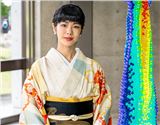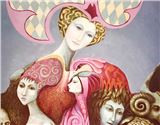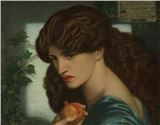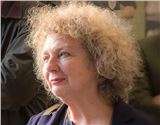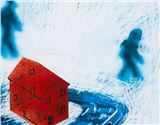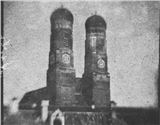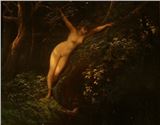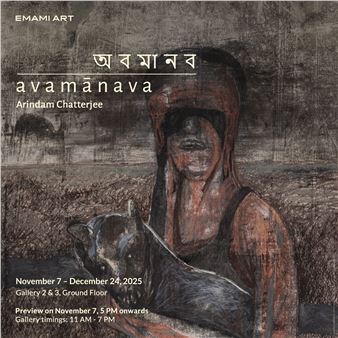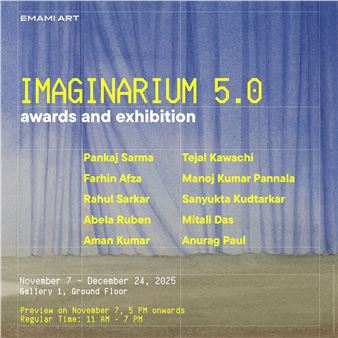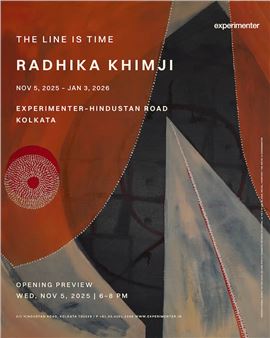Partha Pratim Deb: Play-Forms
"As I age, a host of different ideas swarm into my mind, and I can't help but wish it had happened sooner in life. Back then, I had my family and finances to worry about. Now, as a senior citizen and pensioner, I feel a newfound freedom and an urge to create вҖ” it arrives almost like a responsibility. Selling art is no longer my priority; creating something meaningful is. My years of teaching at Rabindra Bharati University have granted me a fulfilling retirement, allowing me to live and work independently. I now realise I have a profound obligation to art."
The above quote by Partha Pratim Deb, an excerpt originally in Bangla from his diary, speaks to his artistic lateness and the heroism of intransigence reflected in all his works on display. After he retired from Rabindra Bharati University, where he had taught for more than three decades, Partha Pratim Deb (b. 1943) devoted himself entirely to creating art, freely and without abdicating its rights in favour of the demands of the art market. Deb works daily and has produced an immense body of work вҖ” the energy, prolificity, and delicacy of which prove that ill health and old age do not necessarily produce senility/serenity. There is no over-arching scheme of thought behind his works; they are created spontaneously, as days pass by, becoming more wayward and eccentric, without proposing wholeness. For Deb, it is not great ideas but artistic habits that hold his late works together, give them unity, and make them more than a mere collection of fragmented creations. For him, art is what an artist does.
Working across mediums, from painting to assemblage, Partha Pratim Deb has developed his artistic style, combining elements of radical avant-garde practices from the West with the teachings of his renowned mentors in Santiniketan and Baroda. Santiniketan, where he explored dance, music, and theatre beyond visual art, was an occasion for him to discover his artistic self. He learned a great deal from the masters, particularly Gauri Bhanja, Nandalal Bose's elder daughter, who taught design and textiles at Kala Bhavana. Her ingenious dexterity, Deb recalls in one of our conversations, in linear decoration вҖ” the ability to transform an object вҖ” a flower or a leaf вҖ” into a design motif with the help of a few flowing lines, always surprised him. If his obsession with bold, rhythmic lines and patterns has some connection to Santiniketan, Gauri Bhanja, and Benodebehari Mukherjee, it was KG Subramanyan in Baroda who sparked critical thinking in Deb, encouraging him to work in diverse, often unconventional materials. Partha Pratim Deb's art embodies a remarkable effort at eclecticism, a thoughtful synthesis of styles and ideas, mediums and approaches from diverse, incommensurable sources. An admirer of Marcel Duchamp's nominalist spirit, he patiently studied Nandalal Bose's drawings alongside the Pop and OP art grammar without subscribing to their ideologies.
For Deb, art is a pure event or activity and can begin without preplanning or a theme. It is the reason why he does not name his artworks, which are invariably titled 'Untitled'. He prefers to start simply by allowing his hand to move freely (a skilful habit), creating lines, strokes, and form вҖ” in short, the graphic event вҖ” or incorporating chance elements like throwing or spraying paint (an accidental event). While the initial stage relies largely on automatism and the unconscious, the later stage shows the artist gradually gaining control over his work. He develops it through a playful additive process, ending up either with an abstract or a figurative composition. The figures are mostly human beings, male figures, wearing humorous faces and making gestures. When asked why they appear comical, like clowns, Deb replied that it is because they are the inhabitants of the strange and imaginary landscape he had created for them. Working in a style that is hurried and spontaneous, he prefers mediums that are quick to dry, such as waterproof ink and acrylic.

"As I age, a host of different ideas swarm into my mind, and I can't help but wish it had happened sooner in life. Back then, I had my family and finances to worry about. Now, as a senior citizen and pensioner, I feel a newfound freedom and an urge to create вҖ” it arrives almost like a responsibility. Selling art is no longer my priority; creating something meaningful is. My years of teaching at Rabindra Bharati University have granted me a fulfilling retirement, allowing me to live and work independently. I now realise I have a profound obligation to art."
The above quote by Partha Pratim Deb, an excerpt originally in Bangla from his diary, speaks to his artistic lateness and the heroism of intransigence reflected in all his works on display. After he retired from Rabindra Bharati University, where he had taught for more than three decades, Partha Pratim Deb (b. 1943) devoted himself entirely to creating art, freely and without abdicating its rights in favour of the demands of the art market. Deb works daily and has produced an immense body of work вҖ” the energy, prolificity, and delicacy of which prove that ill health and old age do not necessarily produce senility/serenity. There is no over-arching scheme of thought behind his works; they are created spontaneously, as days pass by, becoming more wayward and eccentric, without proposing wholeness. For Deb, it is not great ideas but artistic habits that hold his late works together, give them unity, and make them more than a mere collection of fragmented creations. For him, art is what an artist does.
Working across mediums, from painting to assemblage, Partha Pratim Deb has developed his artistic style, combining elements of radical avant-garde practices from the West with the teachings of his renowned mentors in Santiniketan and Baroda. Santiniketan, where he explored dance, music, and theatre beyond visual art, was an occasion for him to discover his artistic self. He learned a great deal from the masters, particularly Gauri Bhanja, Nandalal Bose's elder daughter, who taught design and textiles at Kala Bhavana. Her ingenious dexterity, Deb recalls in one of our conversations, in linear decoration вҖ” the ability to transform an object вҖ” a flower or a leaf вҖ” into a design motif with the help of a few flowing lines, always surprised him. If his obsession with bold, rhythmic lines and patterns has some connection to Santiniketan, Gauri Bhanja, and Benodebehari Mukherjee, it was KG Subramanyan in Baroda who sparked critical thinking in Deb, encouraging him to work in diverse, often unconventional materials. Partha Pratim Deb's art embodies a remarkable effort at eclecticism, a thoughtful synthesis of styles and ideas, mediums and approaches from diverse, incommensurable sources. An admirer of Marcel Duchamp's nominalist spirit, he patiently studied Nandalal Bose's drawings alongside the Pop and OP art grammar without subscribing to their ideologies.
For Deb, art is a pure event or activity and can begin without preplanning or a theme. It is the reason why he does not name his artworks, which are invariably titled 'Untitled'. He prefers to start simply by allowing his hand to move freely (a skilful habit), creating lines, strokes, and form вҖ” in short, the graphic event вҖ” or incorporating chance elements like throwing or spraying paint (an accidental event). While the initial stage relies largely on automatism and the unconscious, the later stage shows the artist gradually gaining control over his work. He develops it through a playful additive process, ending up either with an abstract or a figurative composition. The figures are mostly human beings, male figures, wearing humorous faces and making gestures. When asked why they appear comical, like clowns, Deb replied that it is because they are the inhabitants of the strange and imaginary landscape he had created for them. Working in a style that is hurried and spontaneous, he prefers mediums that are quick to dry, such as waterproof ink and acrylic.
Artists on show
Contact details


 ARTISTS
ARTISTS
